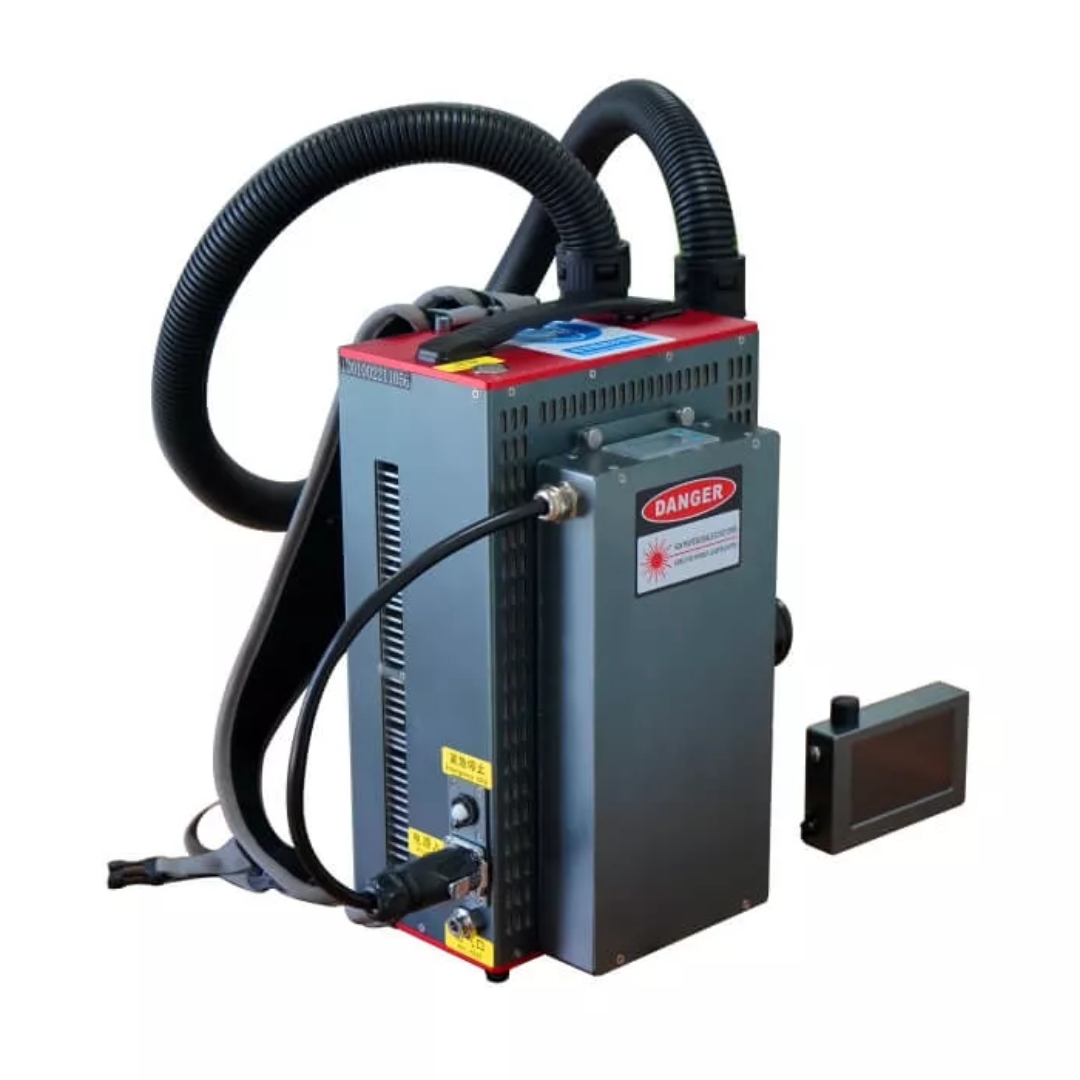
A handheld laser cleaner is a device that uses laser technology to remove contaminants, rust, paint, and other unwanted materials from surfaces. It works by emitting a high-intensity laser beam that interacts with the surface layer, breaking down and vaporizing the unwanted substances. This process is known as laser ablation, where the laser energy causes the targeted material to disintegrate into dust or gas without harming the underlying surface.
The idea of making rust disappear instantly might seem like magic, but it is purely a scientific process. When the laser beam is directed onto a rusted metal surface, it selectively removes the oxidized layer without affecting the base metal. The rust, which is essentially iron oxide, absorbs the laser energy, heats up rapidly, and vaporizes or turns into tiny particles that can be easily wiped away.
How a Handheld Laser Cleaner Works
The laser used in a handheld laser cleaner operates at a specific wavelength, allowing precise targeting of contaminants. Unlike traditional cleaning methods that involve chemicals, abrasive materials, or excessive manual effort, laser cleaning is a contactless and highly controlled process. The key steps involved in using a handheld laser cleaner are:
- Surface Preparation: The object to be cleaned is positioned in a way that allows clear access to the contaminated area.
- Laser Beam Emission: The device is turned on, and the laser beam is directed at the surface.
- Ablation Process: The laser energy interacts with the unwanted material, breaking it down and removing it.
- Residue Removal: The vaporized particles either dissipate into the air or can be collected with a vacuum system.
- Surface Inspection: The cleaned surface is examined to ensure all contaminants are removed.
Applications of a Handheld Laser Cleaner
The versatility of a handheld laser cleaner makes it suitable for various industries and applications. Some common uses include:
- Rust Removal: Ideal for cleaning rusted metal surfaces without damaging the base material.
- Paint Stripping: Effectively removes old paint layers without the need for harsh chemicals.
- Welding Pre-Treatment: Prepares surfaces for welding by eliminating dirt, grease, and oxides.
- Graffiti Removal: Used to clean painted walls or surfaces without damaging the base structure.
- Historical Conservation: Helps restore monuments and artifacts by carefully removing dirt and corrosion.
Is It Really Magic?
While the process of using a handheld laser cleaner might look like magic due to its ability to remove rust instantly, it is purely based on physics and material science. The key principle behind this technology is the precise interaction between laser energy and surface contaminants. When the right laser wavelength is used, the unwanted material absorbs the energy and undergoes rapid thermal expansion, causing it to break apart and be removed.
Unlike traditional methods like sandblasting or chemical treatments, laser cleaning does not leave behind secondary waste or cause excessive surface damage. The laser’s controlled energy ensures that only the unwanted material is removed, while the original surface remains intact.
Comparing Laser Cleaning with Other Methods
- Chemical Cleaning: This involves using strong acids or solvents to dissolve rust and contaminants. However, it produces hazardous waste and can harm the base material.
- Abrasive Blasting: Techniques like sandblasting use high-pressure particles to scrape away rust and paint. While effective, it can be aggressive and cause surface damage.
- Manual Cleaning: Scraping or using wire brushes is labor-intensive and time-consuming, often requiring multiple attempts to achieve desired results.
A handheld laser cleaner stands out because it eliminates these drawbacks, offering a more precise and eco-friendly approach.
Safety Considerations
Although laser cleaning is an advanced technology, safety precautions must be followed to ensure effective operation. Some key safety measures include:
- Wearing Protective Gear: Operators should use laser safety goggles and protective clothing.
- Proper Ventilation: The vaporized particles released during cleaning should be managed with a ventilation or filtration system.
- Surface Compatibility Check: Before cleaning, it is essential to ensure that the material is suitable for laser treatment to avoid unwanted reactions.
Future of Handheld Laser Cleaning
The continuous advancement of laser technology is making handheld laser cleaners more accessible and efficient. As industries move towards cleaner and more sustainable solutions, laser cleaning is gaining widespread acceptance. Future improvements may include:
- More Compact Designs: Making the devices even more portable and easy to use.
- Automated Systems: Integrating AI and automation for precision cleaning.
- Cost Reduction: As technology advances, the cost of laser cleaning solutions is expected to decrease, making them more affordable.
Conclusion
A handheld laser cleaner does not rely on magic but on highly controlled scientific principles. It works by delivering laser energy to remove rust, paint, and other contaminants with precision and efficiency. Unlike traditional cleaning methods, laser cleaning is non-abrasive, eco-friendly, and requires minimal maintenance. With the growing demand for cleaner and safer surface treatment methods, handheld laser cleaners are becoming a preferred choice in various industries.
So, while it may seem like rust is disappearing instantly as if by magic, it is actually the power of laser technology at work.




Leave a Reply